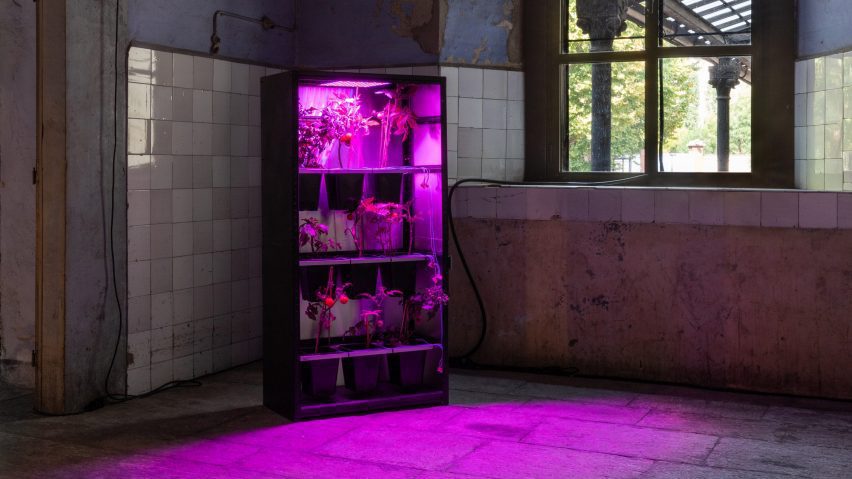
Ilja Schamle powers server with tomato plants in self-sustaining ecosystem
Design Academy Eindhoven graduate Ilja Schamle has replaced batteries with living plants in this self-built server system to explore how technology could enter into a symbiotic relationship with nature.
Showcased as part of the Missed Your Call graduate exhibition at Milan design week, the project sees renewable energy derived from tomato vines used to run a cloud server, while the heat generated by the computer provides optimal growing temperatures for the vegetables.
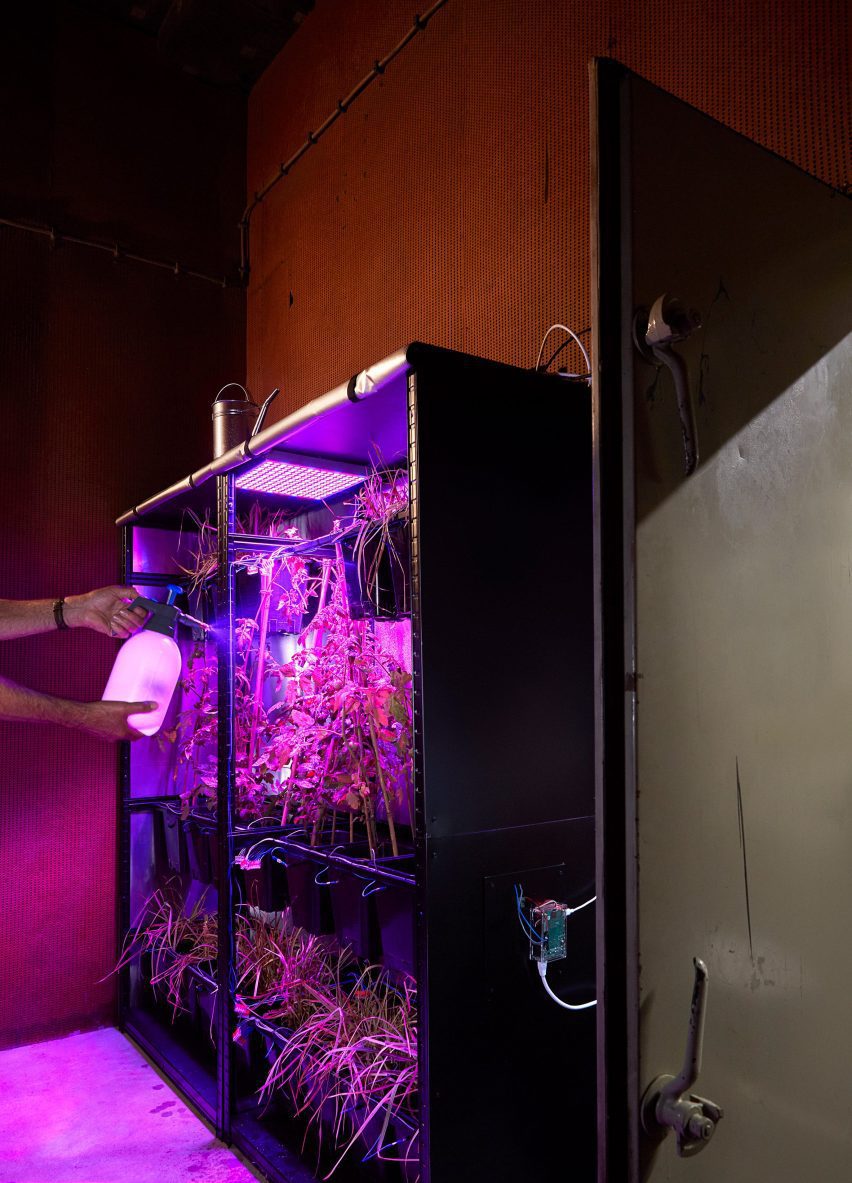
The self-sufficient system, dubbed Warm Earth, was designed for an apocalyptic future, in which humanity can no longer depend on power stations and must instead turn to live plants as an alternative energy source.
"Having the whole internet run on plants, it wouldn't be possible with the way that we're using servers right now and how much content there is," Schamle told Dezeen.
"We wouldn't be able to function in this way and that is a very harsh reality," she said. "It can help us understand how much energy is needed to run these systems and how far detached we are from them."
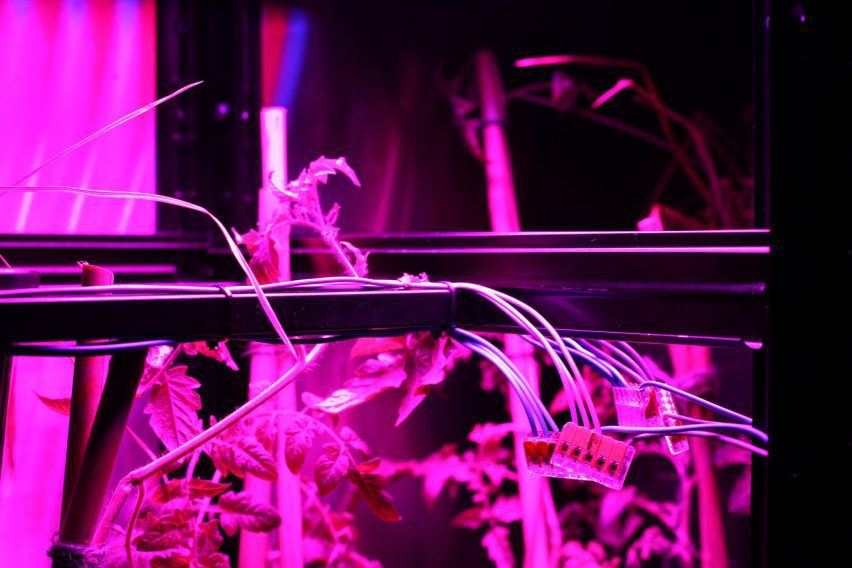
Schamle's artificial ecosystem was conceived to take data centres from being foreign entities, hidden from our daily lives, to everyday fixtures in our homes.
It sees the tomato plants housed within a traditional server rack cabinet while the server itself is mounted to the exterior.
A ventilation shaft connects the two, with a fan helping to funnel the hot air generated by the microcomputer into the interior of the cabinet, effectively turning it into a greenhouse.
At the same time, the tomatoes help to power the server through plant-microbial fuel cell technology, pioneered by researchers at Wageningen University in the Netherlands, which effectively turns the vegetables into batteries.
The plants draw energy from the sun in the process of photosynthesis, converting it into chemical energy and storing it in the sugars and proteins they use to build their bodies.
Any excess is excreted through the roots as a waste product, where the energy-rich organic material is broken down by bacteria living in the soil, releasing the energy stored in the organic material as electrons that can then be harnessed as electricity.
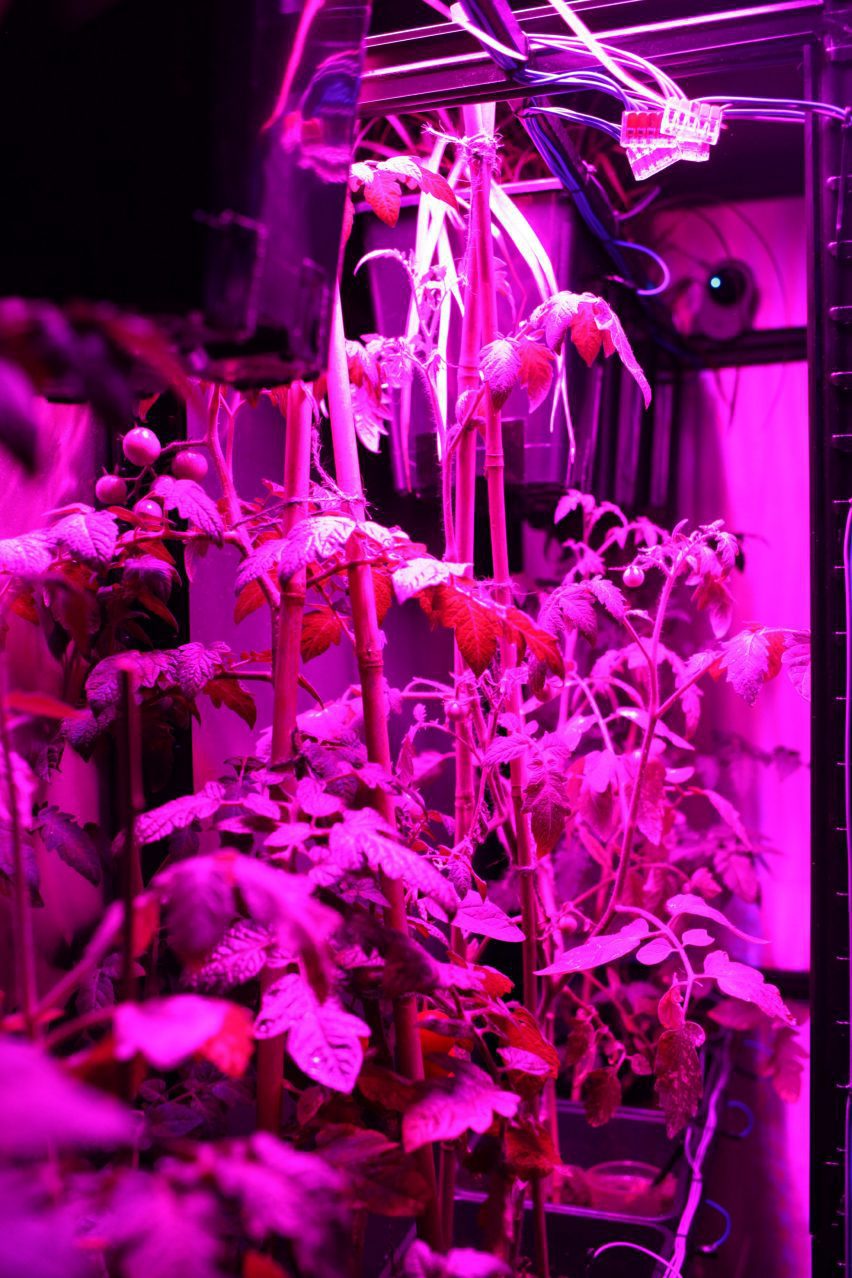
As the server needs to be indoors, away from the elements, sunlight in Schamle's system is delivered from a solar-powered grow lamp. And the electrons released by the microbes are caught by an iron and activated-carbon grid embedded into the bottom of the plant pot, acting as a conductor.
"The technology is still in development and there was a lot of trial and error doing everything myself," Schamle explained.
"For now, it's running on both solar energy and the energy that I'm extracting from the plants because it's very little," she said.
"But I wanted to really focus on that inefficiency as something that we will have to adapt to if we want to live in symbiosis with other beings on this planet."

The server has just enough energy to host a single website, which flashes up a series of questions about how our network infrastructure impacts the natural environment.
"It feels poetic to have the server asking these questions using the energy from the plants," Schamle explained.
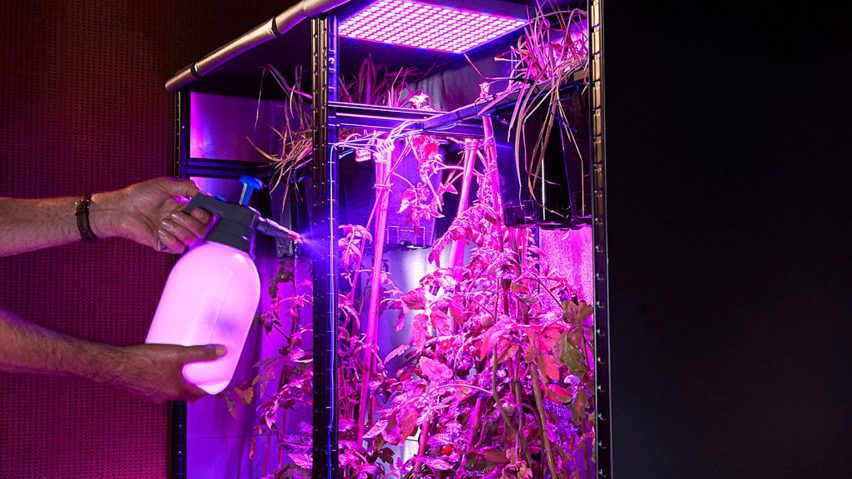
Researchers are already developing lights and batteries powered by plant-microbial fuel cells. And with increased efficiency, they believe the technology could be scaled up to generate as much as 3.2 watts of electricity per square metre of planting, enough to power a small building via its own green roof.
But this is far from the 200 trillion watts that data centres consumed globally every hour in 2019, generating more carbon emissions every year than air travel.
"The pace of the internet is extreme compared to the pace of plants, how they grow and how the bacteria breaks down and releases electrons," Schamle said.
"Combining these two systems accentuates the excessiveness of our online behaviour and its electricity use."
Other attempts at integrating technology into plants have seen researchers from the Massachusetts Institute of Technology grow conductive wires through their leaves so they can act as sensors and displays, as well as impregnating them with the firefly enzyme to turn them into lamps.
Missed Your Call – the Design Academy Eindhoven graduate exhibition took place from 5 to 10 September as part of Milan design week 2021.
See Dezeen Events Guide for an up-to-date list of architecture and design events taking place around the world.